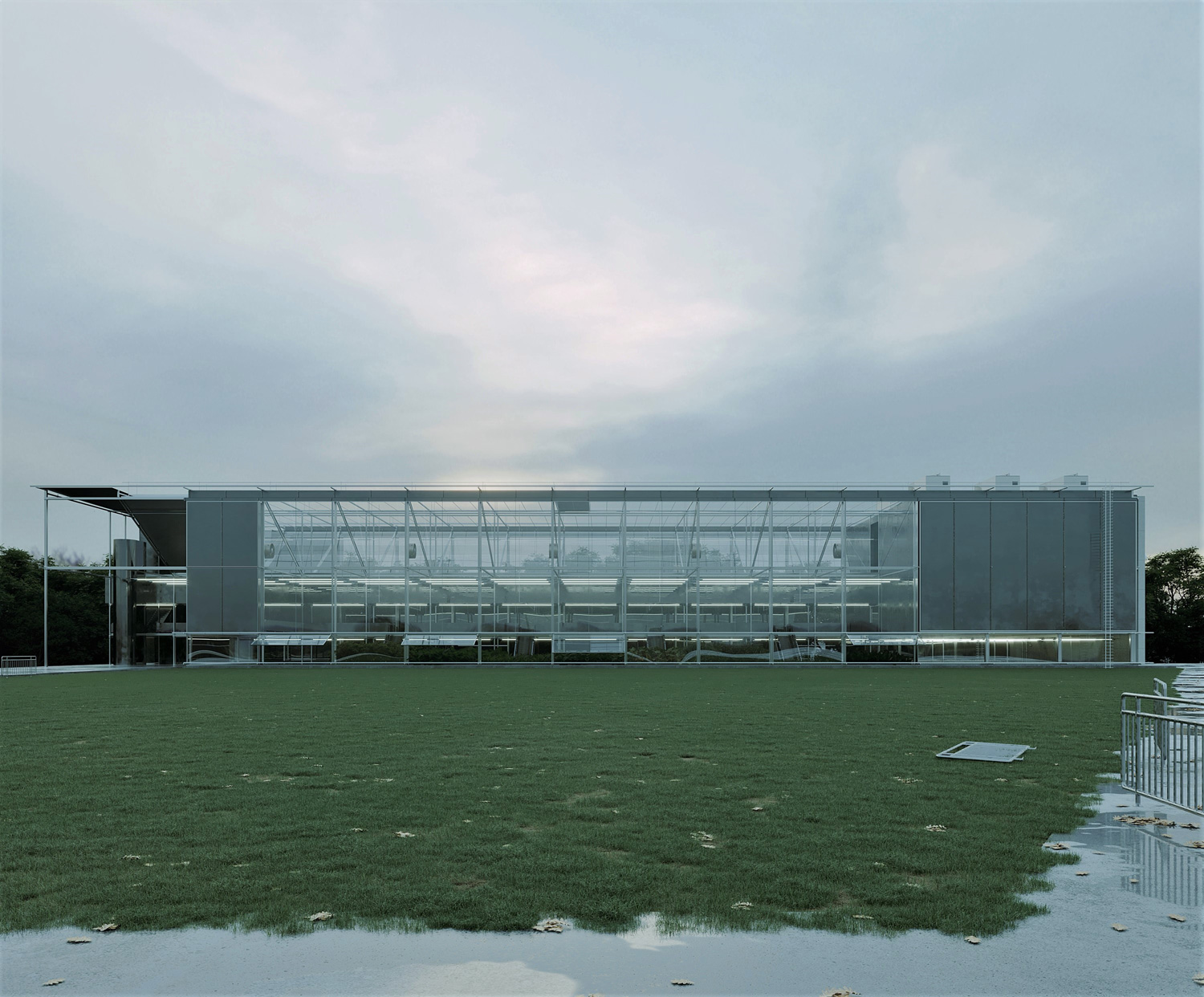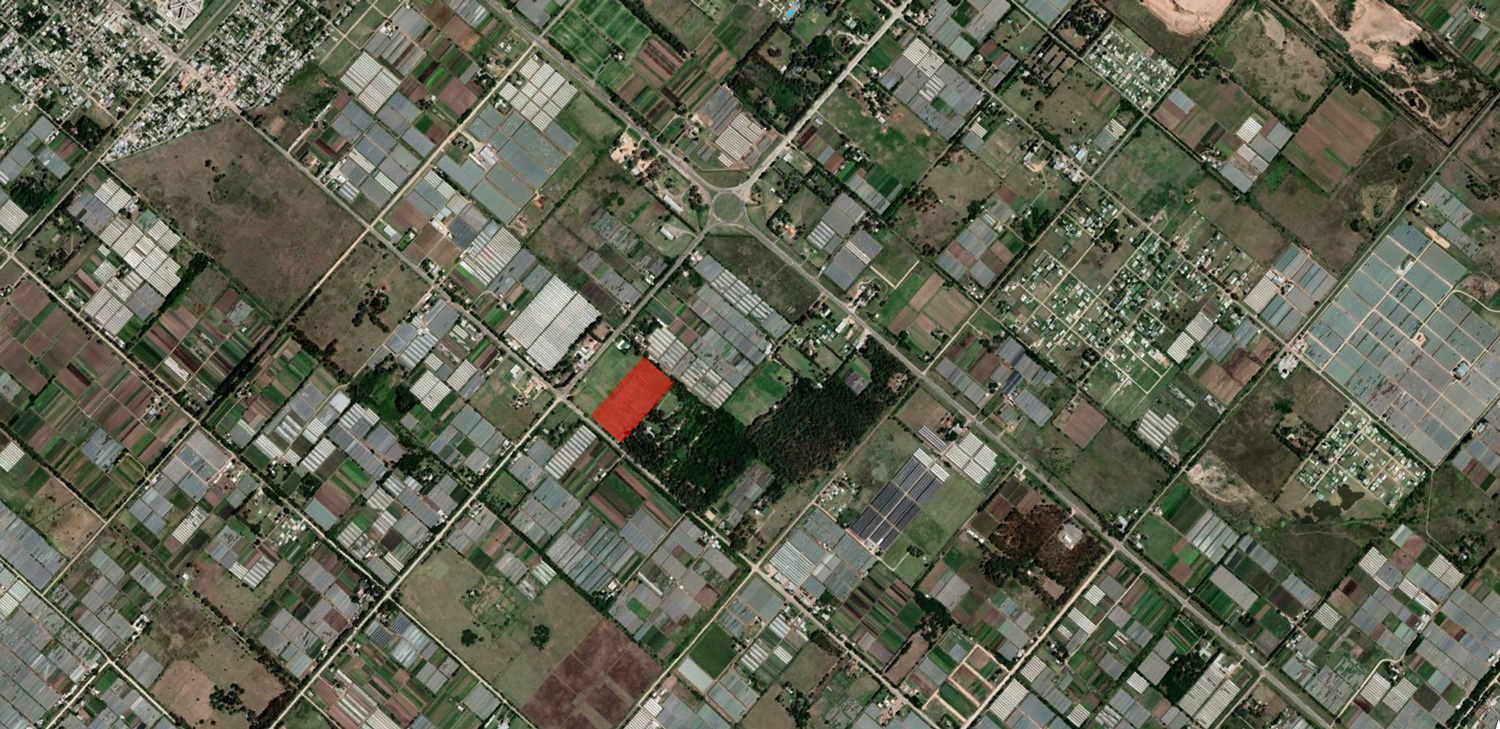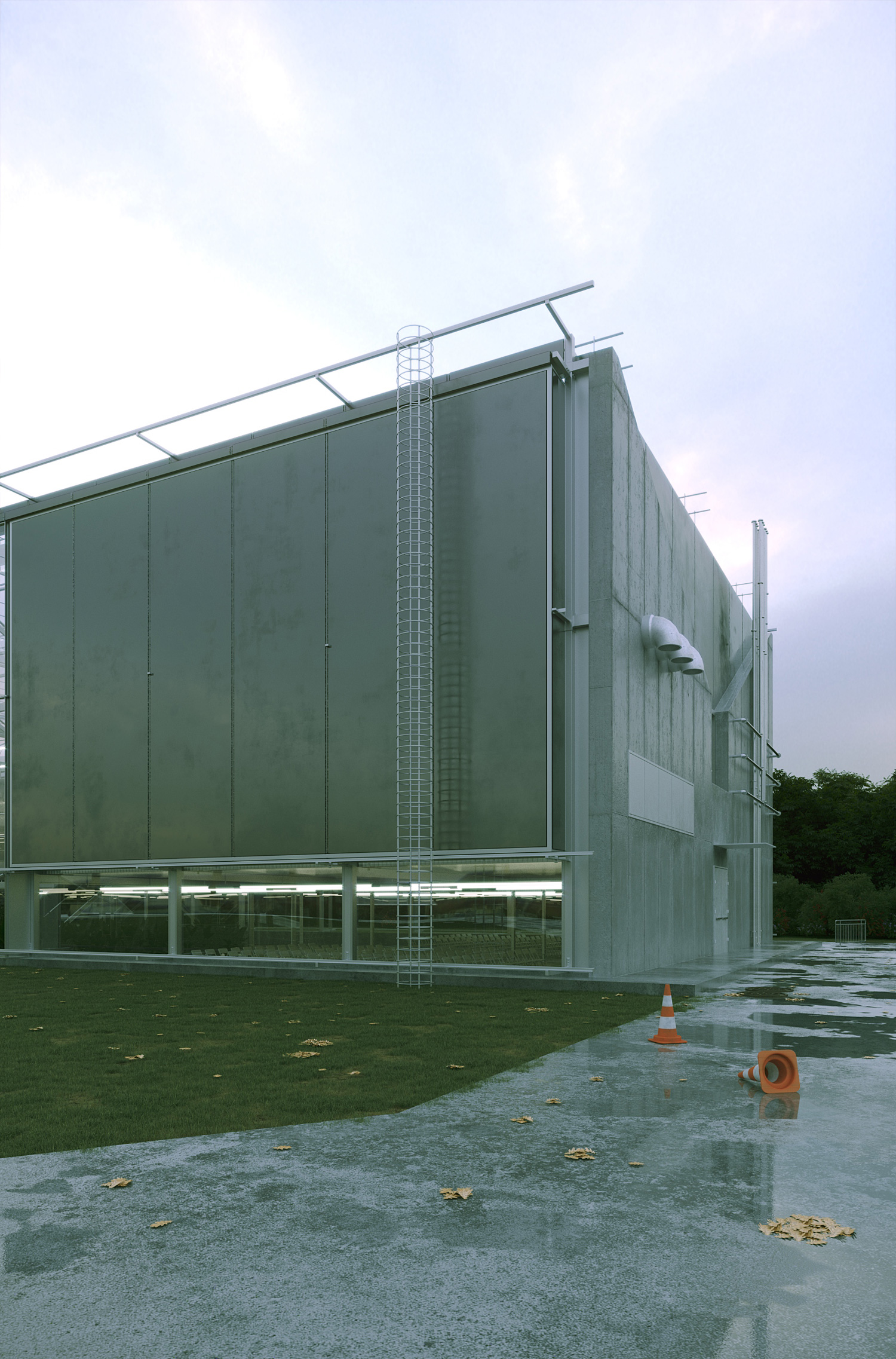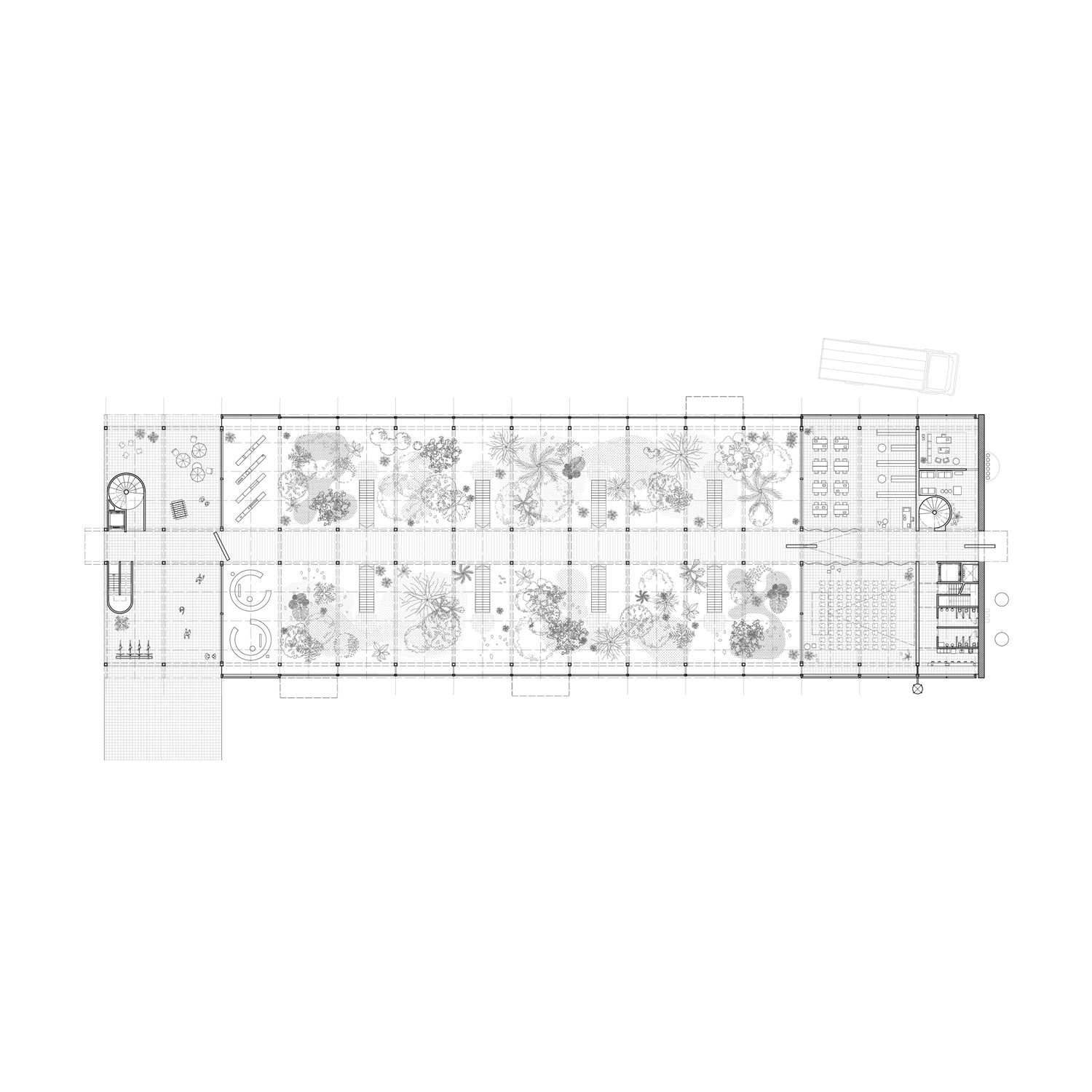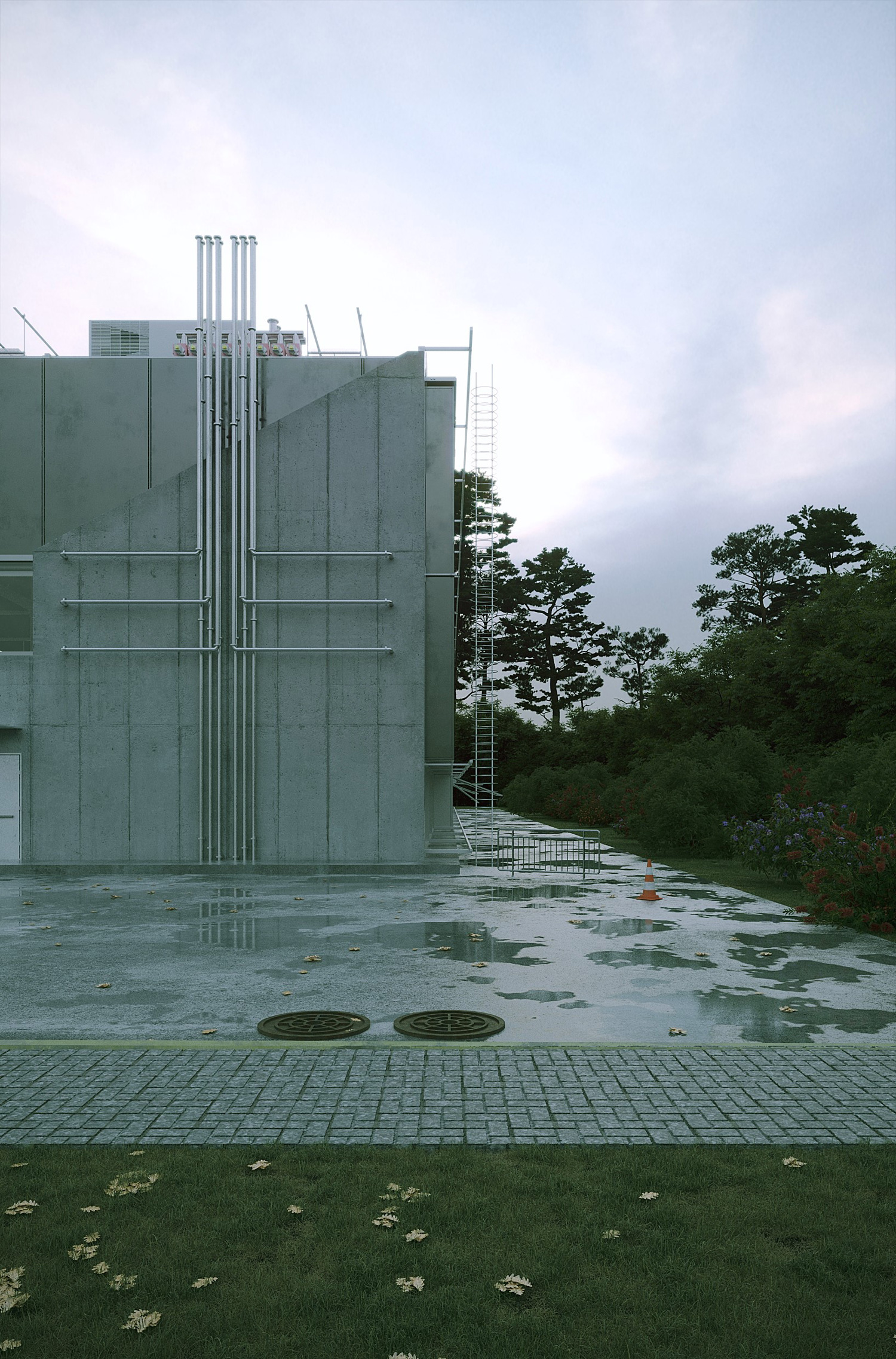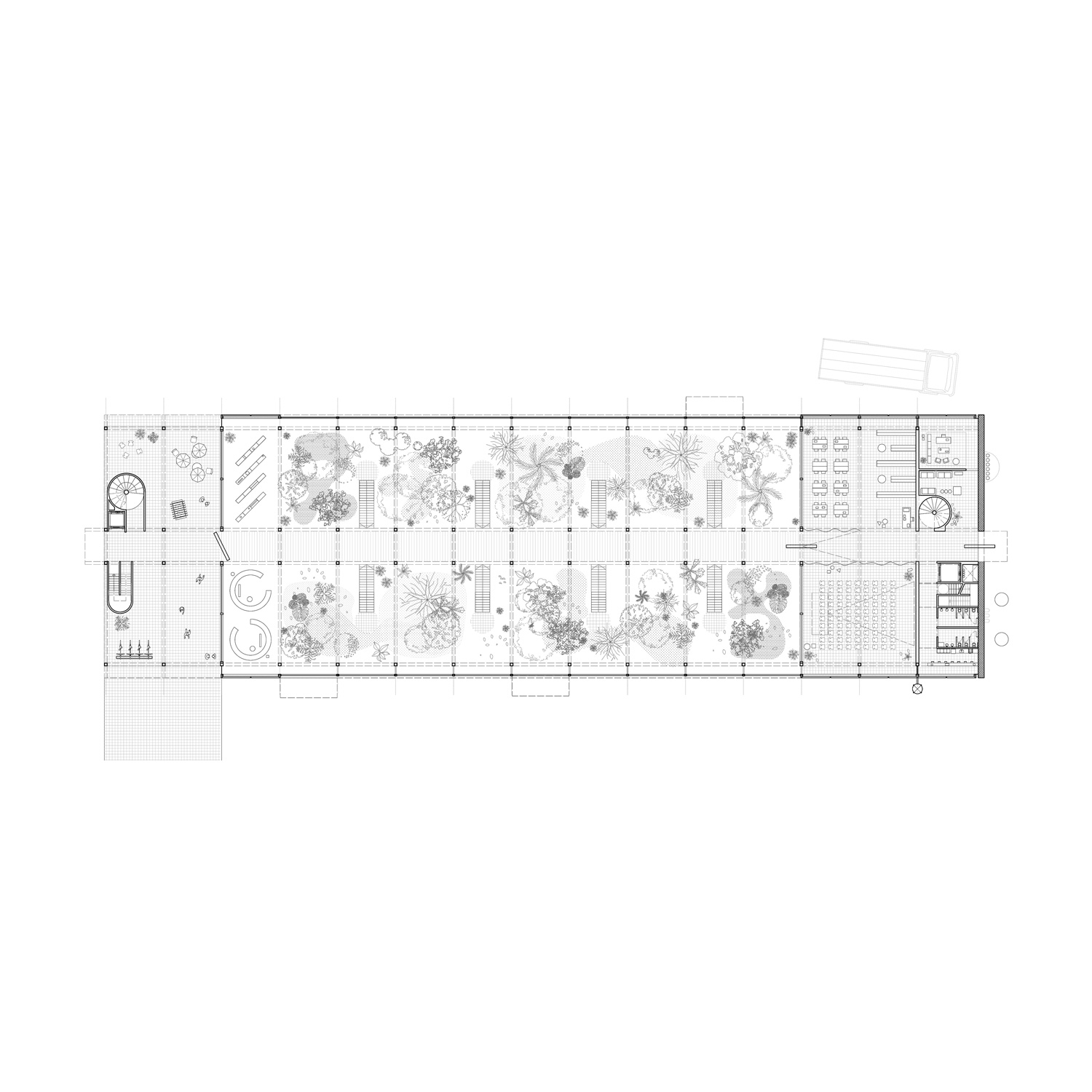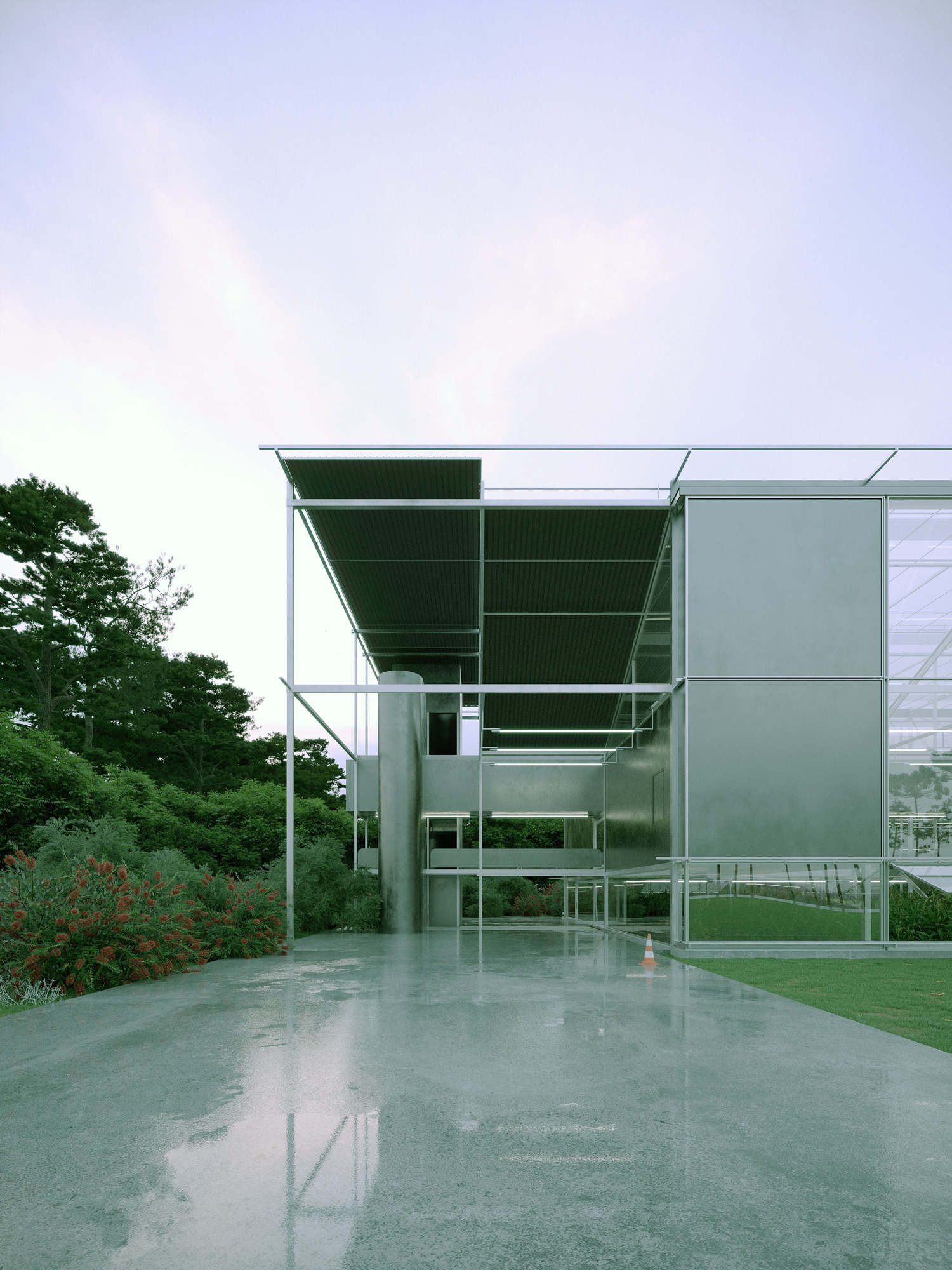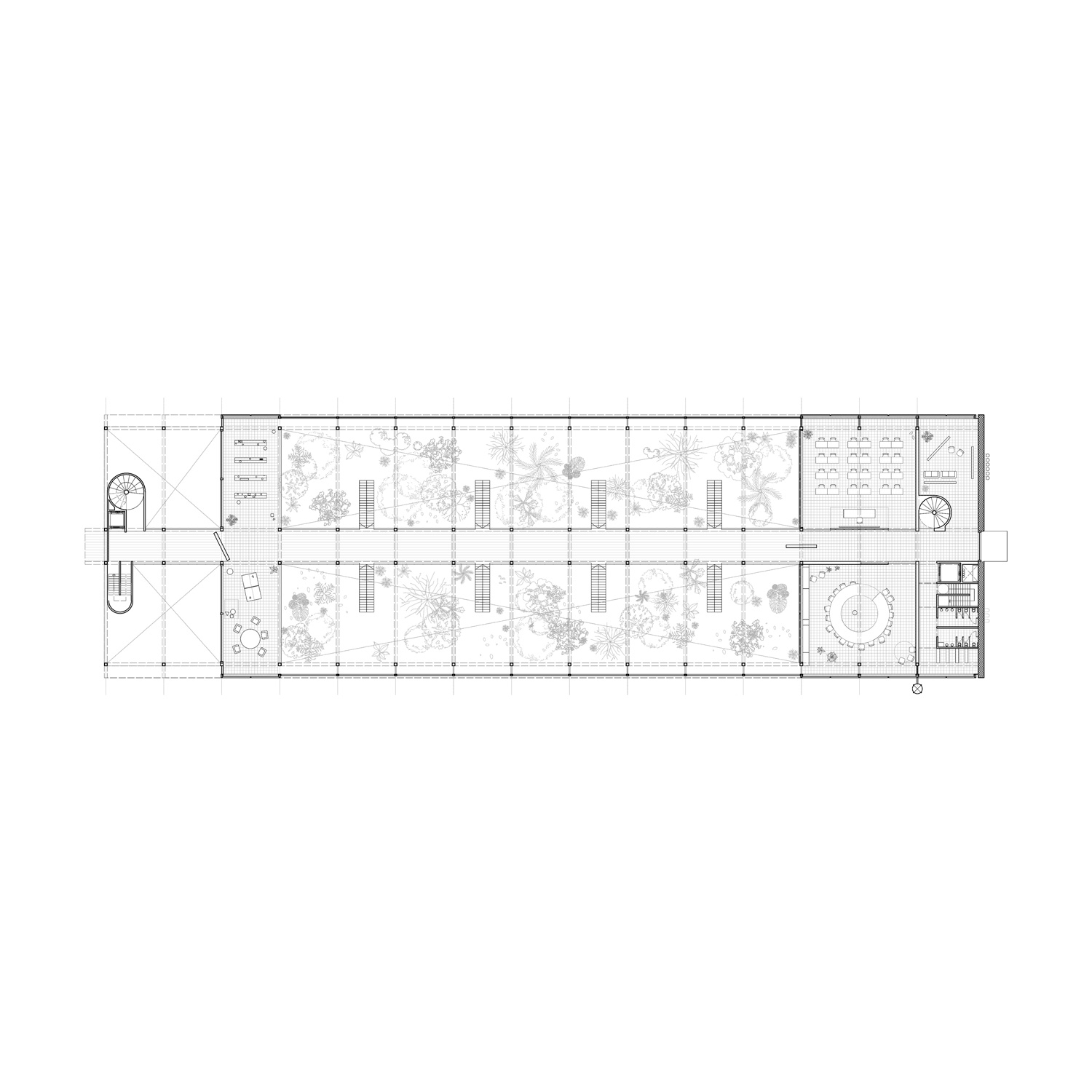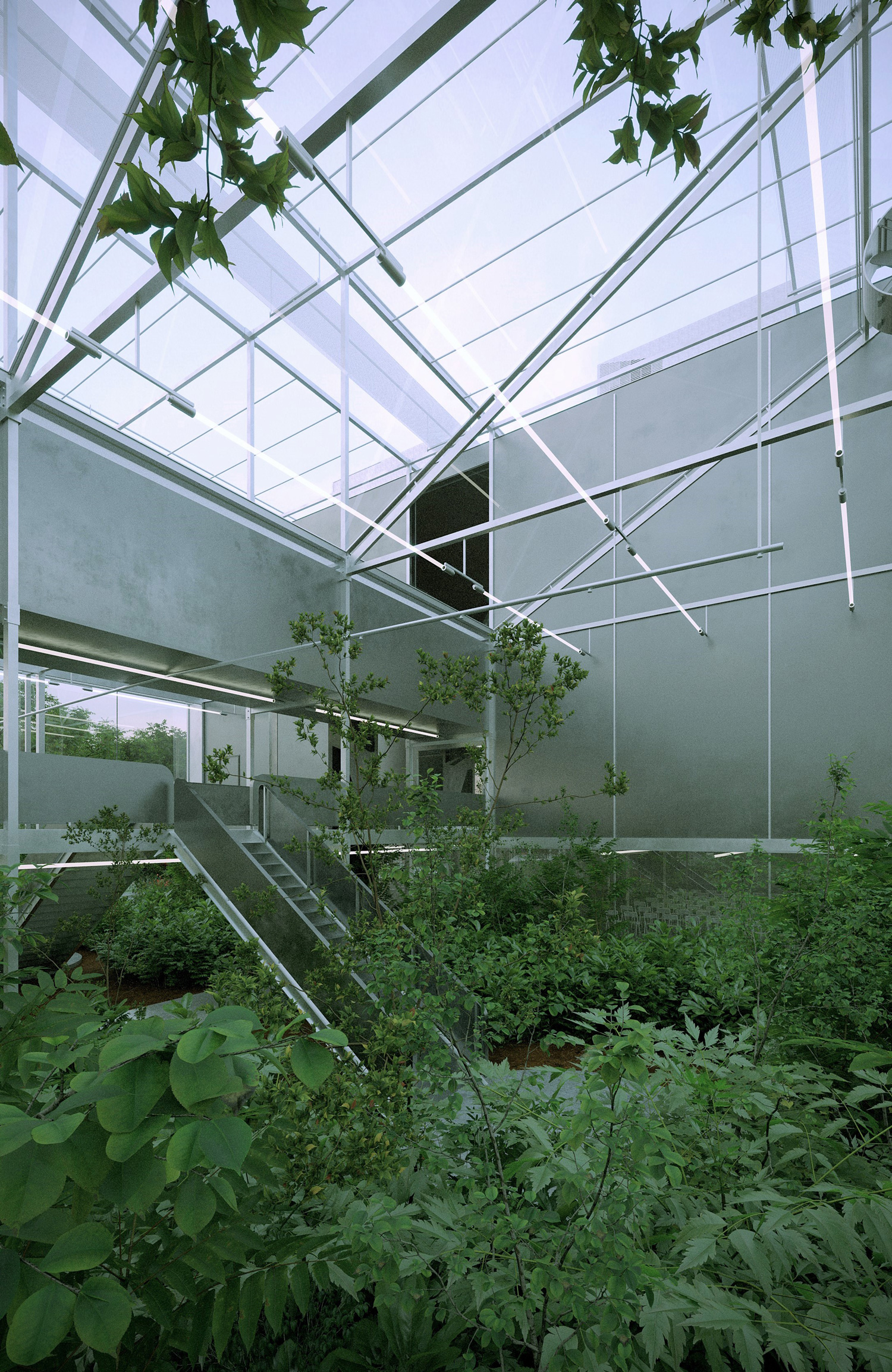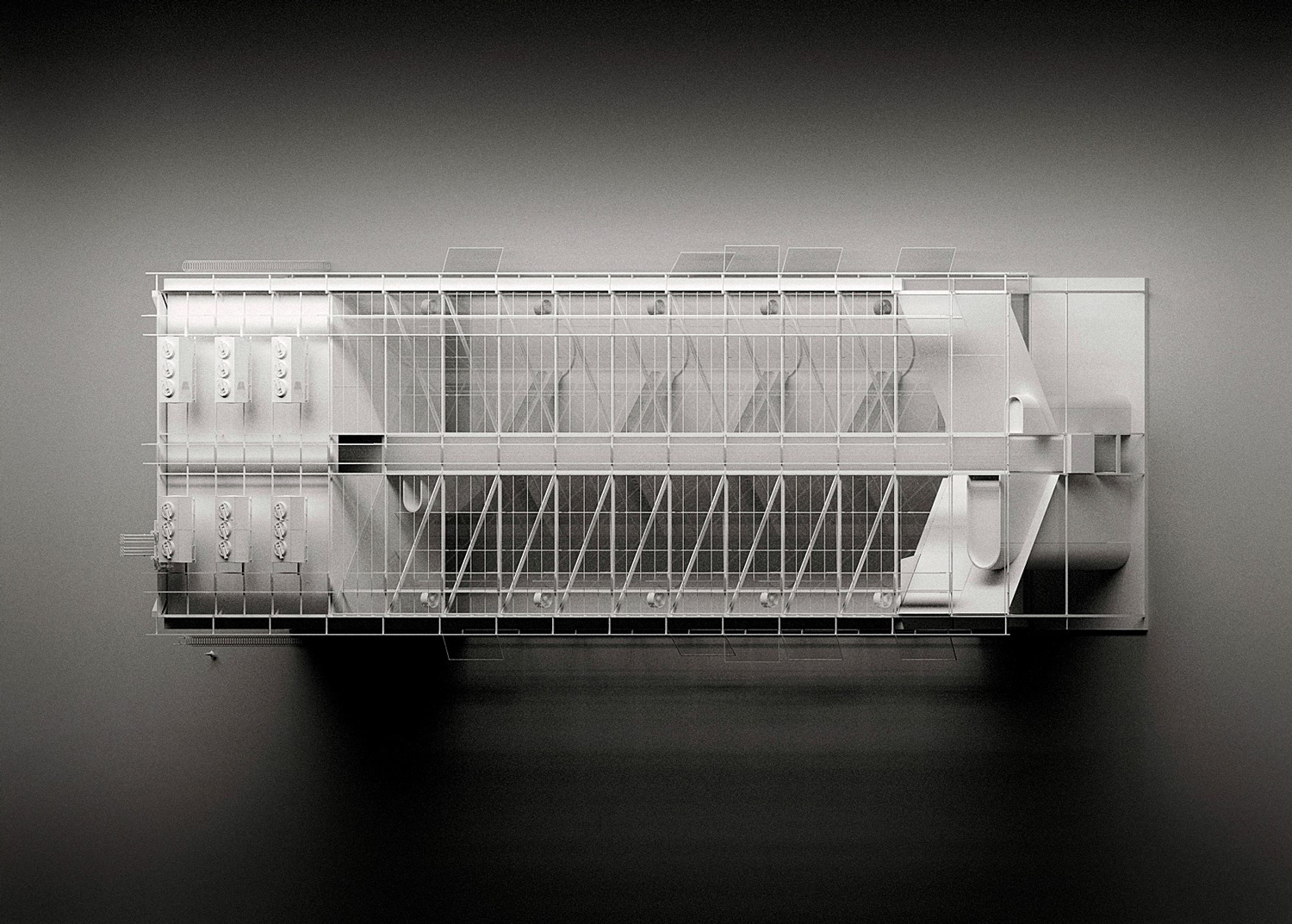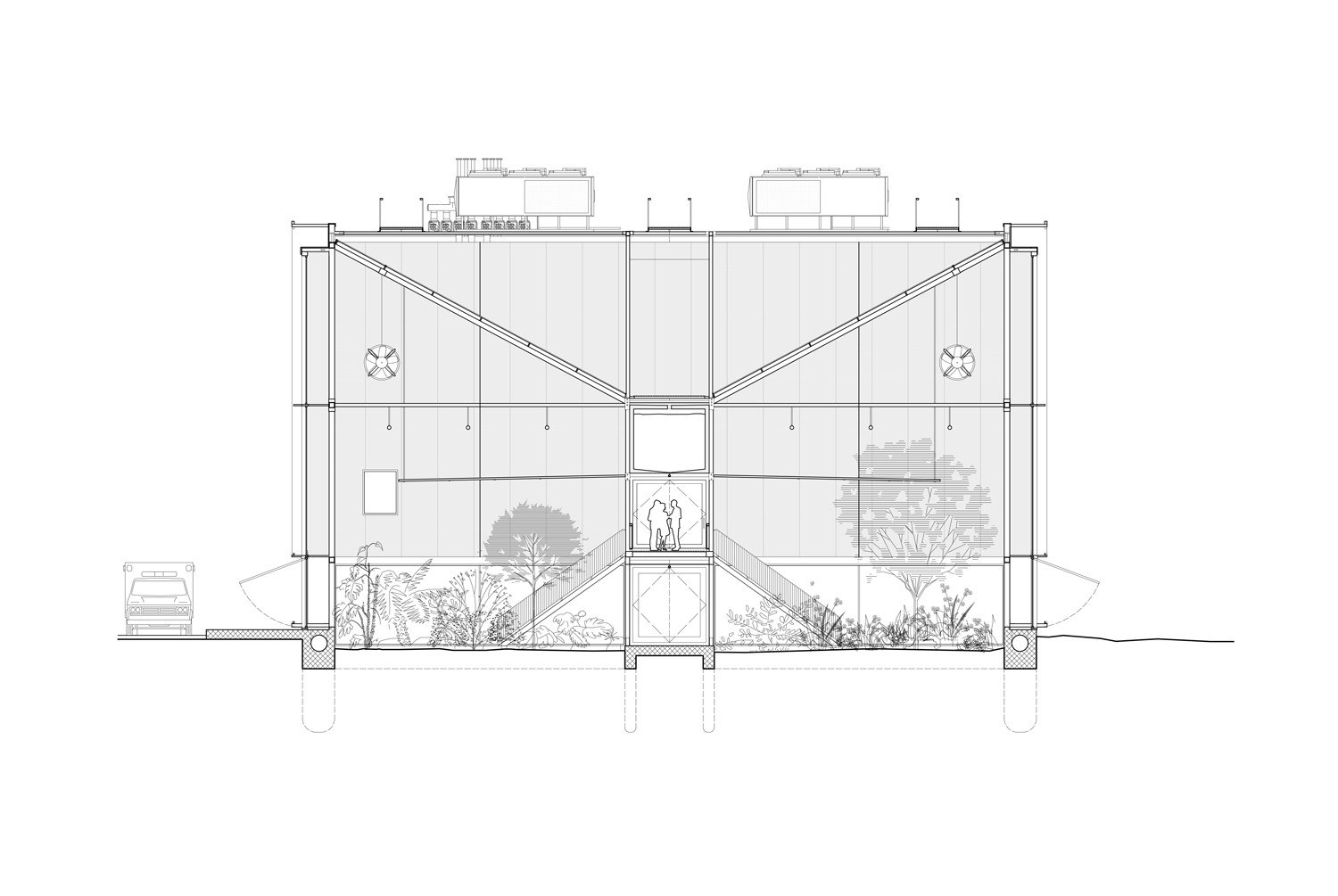3001-MXB-LPG.AR-2021
Client: Universidad Nacional de La Plata
Status: Academic
Location: La Plata, Argentina
Coordinates: -35.011079, -58.025065
Climate: Temperate, Humid subtropical
Materials: Glass, Metal
Environment: Urban
Visualizer: Studio
Scale: 4.000 ㎡ Medium
Types: Education, Research center
The Botanic LAB is a proposal for a new educational building in the outskirts of the city of La Plata, 40 minutes away from the capital city of Argentina. This area plays a key role in the production and supply of vegetables for more than 3 million people. Greenhouses for production are now part of the landscape of this rural area. Therefore, by taking this typology as its template, the project aims to rethink the relation between production and education. Some concepts were borrowed:
Using meccano-like structural elements (lightweight parts connected using nuts and bolts), allows the three dimensional grid to be both assembled and disassembled. Its façade, composed of polycarbonate and aluminum sheets, shifts between being a mirror of the surrounding landscape to a transparent object depending on the sun.
The project, designed on a symmetrical plan, under a rigorous 3×3 meters grid, is conceived as a simple rectangular prism that emphasizes the horizontality of its landscape. The building aims to combine different programs that at first may seem uneven. The main goal was to bring together cultural, scientific and educational activities into the same compact volume to create a sustainable and effective new infrastructure. An educational tool, as well as a source of biodiversity.
The program is divided up in order to create movement. The sequence starts with a triple height public plaza, where a long platform links different activities stretching through the entire length of a big internal void. This center space, which hosts the greenhouse itself structures the rest of the activities of the lab. Public ones, such as leisure and education take place on the ground and first floor, while research and experimentation activities on the second level.
An interior spiral stair controls different levels of privacy while the exterior one, invites people to enter inside the greenhouse. By connecting these two vertical circulation systems located at the end of the building, the walkway enables researchers to observe from three different points of view the several layers of the vegetation while facilitating encounters between different users. This layout centers vegetation both in a physical and a symbolic way.
It appears to be an odd duality between the simple and plain condition of the exterior layer and the world that It protects. As a metaphor for the animal body, where the skin creates an ideal condition for the whole systems inside. Variables such as air humidity and temperature might be modified to achieve the desired environment for agricultural experimentation. A rather simple mechanical system makes possible to control its flow and characteristics.
Automatic windows, located at the roof and at the ground level of the façade, generate crossed ventilation. Unlike most greenhouses, the v-shaped roof collects rainwater for the pressured irrigation system, composed of a big tank and 18 hoses with sprinklers to moisten the environment. The whole transparent façade is coupled with big shutters that can lower the temperature inside by reducing the amount of uv radiation. Each self-defined and distinctive element integrate into a unified system unveiling the technical essence of the project.
This new building attempts to develop a different idea for contemporary education, where the ambition is to reach the correct balance between society, nature, education and production.
